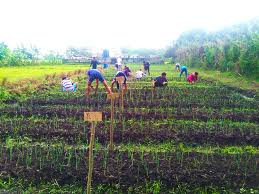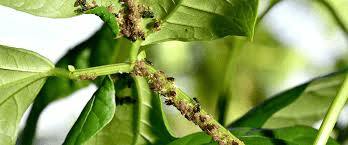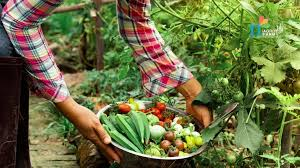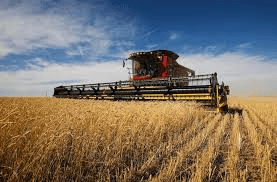Conventional farming is a dominant method of agriculture that emphasizes maximizing yields and efficiency through various technologies and practices. This approach has transformed agriculture over the centuries, contributing to global food security and economic growth. However, it also poses challenges and impacts that need to be carefully managed.
History and Evolution
1. Early Beginnings: Conventional farming has evolved from ancient agricultural practices where early humans began cultivating crops and domesticating animals.
2. Industrial Revolution: The Industrial Revolution marked a major shift with the introduction of machinery, synthetic fertilizers, and other technologies that boosted agricultural productivity.
3. Green Revolution: In the mid-20th century, the Green Revolution introduced high-yield crop varieties and modern inputs, significantly increasing food production.
4. Modern Developments: Today, conventional farming incorporates advanced technologies like precision agriculture and GMOs to further enhance efficiency and productivity.
Key Characteristics
1. High-Yield Crops: Utilizes genetically modified and high-yield crop varieties to maximize production.
2. Synthetic Inputs: Relies on synthetic fertilizers and pesticides to enhance growth and control pests.
3. Monoculture: Often involves growing a single crop species over large areas, simplifying planting and harvesting.
4. Mechanization: Employs advanced machinery for planting, cultivating, and harvesting, increasing efficiency and reducing labor.
Common Practices and Techniques
1. Tillage: Turns and mixes soil to prepare it for planting, but can lead to soil erosion.
2. Irrigation: Uses methods like drip irrigation and sprinklers to provide water to crops.
3. Fertilization: Applies synthetic fertilizers to provide essential nutrients to crops.
4. Pest Control: Uses pesticides and herbicides to manage pests and weeds.
5. Crop Rotation: Alternates different crops in the same field to maintain soil health and reduce pests.
Use of Chemical Inputs

1. Fertilizers: Provides essential nutrients but can lead to nutrient runoff and water pollution.
2. Pesticides: Protects crops from pests but may harm beneficial insects and wildlife.
3. Herbicides: Controls weeds that compete with crops for resources.
4. Fungicides: Prevents or treats fungal infections in plants.
Impact on Soil Health
1. Soil Erosion: Tillage and monoculture can lead to loss of topsoil.
2. Soil Degradation: Synthetic inputs can disrupt microbial activity and reduce soil organic matter.
3. Nutrient Imbalance: Over-reliance on synthetic fertilizers can lead to nutrient imbalances.
4. Loss of Biodiversity: Monoculture reduces soil biodiversity.
Water Usage and Irrigation
1. High Water Demand: Conventional farming often requires substantial irrigation.
2. Irrigation Methods: Includes drip and sprinkler systems to distribute water efficiently.
3. Water Management: Proper practices help conserve water and maximize crop yields.
4. Impact on Water Resources: Excessive use can deplete water sources and cause contamination.
Read Also: Apple Maggot: Description, Damages Caused, Control and Preventive Measures
Pest and Disease Management

1. Integrated Pest Management (IPM): Combines biological, physical, and chemical methods to manage pests while minimizing environmental impact.
2. Chemical Control: Uses pesticides to control pest populations but can lead to resistance and environmental concerns.
3. Cultural Practices: Includes crop rotation and proper sanitation to reduce pest and disease risks.
4. Monitoring and Forecasting: Involves regularly monitoring pest populations and forecasting potential outbreaks to take timely action.
Economic Aspects
1. Increased Yields: Conventional farming practices generally result in higher crop yields, which can improve profitability for farmers.
2. Cost of Inputs: The use of synthetic fertilizers, pesticides, and machinery involves significant costs, which can impact overall profitability.
3. Market Demand: High yields meet market demand and stabilize food prices, benefiting consumers and producers alike.
4. Subsidies and Support: Government subsidies and support programs can offset some of the costs associated with conventional farming.
Environmental Impacts
1. Soil Health: Practices like tillage and monoculture can degrade soil health and reduce biodiversity.
2. Water Pollution: Runoff from fertilizers and pesticides can contaminate water sources, affecting aquatic ecosystems.
3. Greenhouse Gas Emissions: The use of synthetic fertilizers and machinery contributes to greenhouse gas emissions.
4. Loss of Biodiversity: Monoculture and pesticide use can lead to a loss of biodiversity in agricultural landscapes.
Advantages of Conventional Farming
1. High Efficiency: Advanced technologies and practices increase productivity and efficiency.
2. Cost-Effective: Large-scale production and mechanization reduce labor costs and can make food more affordable.
3. Reliability: Proven methods and technologies provide consistent yields and reliable food production.
4. Market Supply: Helps meet the demands of a growing global population by providing abundant food supplies.
Disadvantages and Challenges
1. Environmental Impact: Can lead to soil degradation, water pollution, and loss of biodiversity.
2. Health Risks: Excessive use of chemicals can pose risks to human health and the environment.
3. Resource Intensive: Requires significant inputs of water, energy, and other resources, which may not be sustainable in the long term.
4. Resistance Issues: Overuse of pesticides can lead to pest resistance, making control measures less effective.
Read Also: 15 Medicinal Health Benefits Of Lysimachia clethroides (Gooseneck Loosestrife)
Comparison with Organic Farming

1. Pesticide Use: Conventional farming relies on synthetic pesticides, while organic farming uses natural or less harmful pest control methods.
2. Fertilization: Conventional methods use synthetic fertilizers, whereas organic farming uses compost and natural fertilizers to enhance soil health.
3. Soil Management: Organic farming emphasizes soil health through practices like composting and reduced tillage, unlike conventional methods that can degrade soil over time.
4. Environmental Impact: Organic farming generally has a lower environmental impact, promoting biodiversity and reducing pollution.
Conclusion
Conventional farming has played a vital role in increasing agricultural productivity and feeding the global population. Its emphasis on high yields, mechanization, and synthetic inputs has driven significant advancements in agriculture.
However, it also faces challenges related to environmental impact, soil health, and resource use. Understanding these aspects, along with the differences between conventional and organic farming, helps in making informed decisions about agricultural practices and their future sustainability.
Balancing productivity with environmental and health considerations remains crucial for the ongoing evolution of farming practices.
Read Also: Top 20 Proven Benefits of Ginger Plant

